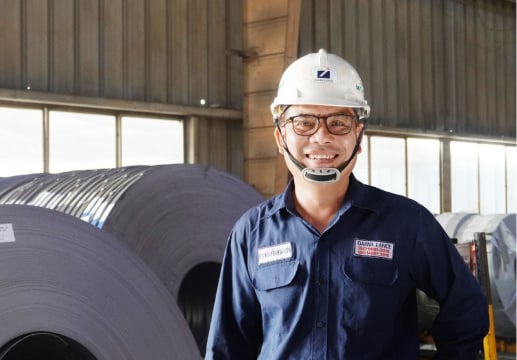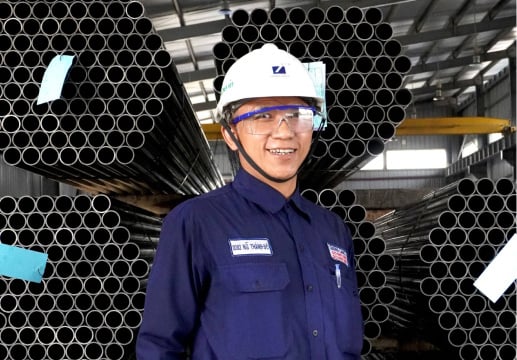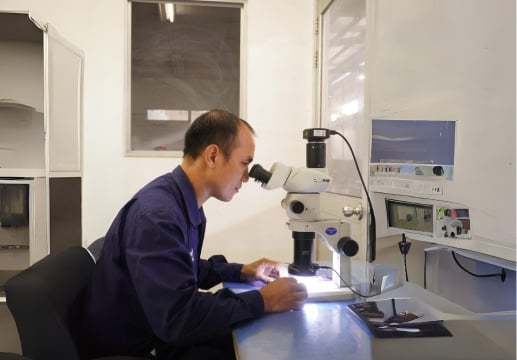When using lance pipes, it's crucial to connect two together. This keeps operators safe by maintaining a good distance and prevents wasting partially burned pipes.
How can we quickly connect oxygen lance pipe to save time? How can we avoid wasting the usable portion of oxygen lance pipes that were partially used to burn materials in the furnace?
These questions are probably occupying your thoughts, prompting you to seek solutions for improving efficiency and reducing waste. Today, we're here to address your concerns by offering detailed and practical solutions to enhance the efficiency and effectiveness of your oxygen lance pipe usage.

Understanding Daiwa SC Lance
First and foremost, we need to understand the fundamental things about Daiwa SC Lance in order to make the most of it for our intended purposes and applications.
Daiwa SC Lance is basically a consumable steel pipe made from mild steel and mostly used for opening tapholes, cleaning residual slags or blowing oxygen into Electric Arc Furnace.
Capable of producing temperatures over 3,000°C and available in lengths from 1m to over 5.5mm, the operator can easily handle the oxygen lance pipe and maneuver it freely to stir the hot molten material inside the furnace.

Why Should We Connect Daiwa SC Lance?
Due to its nature as a consumable steel pipe, Daiwa SC Lance will be entirely consumed through the burning process.
To avoid waste and make full use of every remaining piece of the lance pipe after most of it has been consumed, it is recommended that we should connect two oxygen lance pipes together.
In order to do this connection, we can choose to either weld two lances together, use a thread and socket, a simple cup, or alternative couplings to connect the two lances.
Next, we'll discuss 4 ways to connect Daiwa SC Lance. Please remember, the most appropriate connection method depends on your specific application. Make sure you understand your needs before choosing a method. If you need more advice on selecting the right connection of Daiwa SC Lance for your application, please don't hesitate to contact us.
How to Connect Two Daiwa SC Lances Together?
Before coming to the quick ways, let’s find out all ways to connect two Daiwa SC Lance together first.
Connect Daiwa SC Lance with Type PE (Plain End)
This one is the simplest type: PE.
As you can see in the picture below, PE means plain end, so there is no coverage for both ends of Daiwa SC Lance.

This significantly reduces the time required for production and delivery as there is no need to perform any fabrication work for either end.
However, this means we either have to dispose of the remaining lance pipes, even though a small portion is still usable, or manually weld the two lance pipes together when using Type PE.
If this option suits your needs, we believe that Type PE of Daiwa SC Lance is still a reasonable choice.
If you prefer not to waste materials by discarding the leftover lance pipes or spend excessive time welding the two lances together, consider exploring the connection types we outline here.
Connect Daiwa SC Lance with Type T2 (Socket Screw & Threaded End)
Next, we have a manual but easy way to connect Daiwa SC Lance. It is with socket screw and thread.
Socket is a type of connection used to join two lance pipes together. A key feature to note when using sockets is that the oxygen lance pipe must have at least one threaded end.
The way socket and thread work is simply like this. The oxygen lance pipe and socket will be machined with matching spiral threads. When the oxygen lance pipe is inserted into the socket and rotated, the threads on each component interlock, creating a tight fit. The friction between the threads provides mechanical resistance, preventing the pipe from loosening during operation.
Because of its convenience, Type T2 is one of the most frequently used technical specifications for Daiwa SC Lance.

Connect Daiwa SC Lance with Type SE (Swaged End)
The 3rd type among 4 types of connection for Daiwa SC Lance is called SE (short for Swaged End). For this type, both ends of Daiwa SC Lance will be meticulously swaged in a way that matches the inner and outer diameter of the simple cup. Then, when connecting oxygen lance pipes, we strongly press one end with a simple cup into the swaged end, creating a stable joint. After pressing them together, we will meticulously examine the fit to ensure no visible gaps are present between the joints.
This method is designed for a quick connection, leveraging the swaged end's simple cup to hold the pipes in place. However, in terms of safety, Type SE is not as reliable as Type T2 because we cannot guarantee a perfect fit for the connection.

Connect Daiwa SC Lance with Type T6
Lastly, let's explore a variant of Daiwa SC Lance that features two mechanical designs: Type T6.
Press Coupling End
For the 1st mechanical design of Type T6, the oxygen lance pipe will be made with a plain end and the other end fitted with a Press Coupling End.

This type works based on the use Daiwa Press Machine. Instead of manually pressing the coupling into the oxygen lance pipes, we can leverage the strong hydraulic force of Daiwa Press Machine to apply pressure to the coupling and lance pipe, allowing the attachment of the remaining lance pipe to a new one.
The advantage of using Type T6 with Press Coupling End is we do not need for pipe threading production but still be able to keep fast and safe pipe connection while minimizing the risk of gas leakage thanks to high hydraulic pressure from Daiwa Press Machine.
We consider Type T6 to be the fastest and safest choice of all types. It can help reduce worries about potential risks during the blowing process by ensuring a secure and tight connection.
If you want to know how to connect oxygen lance pipes step-by-step by using Daiwa Press Machine, you can download the catalog for more detailed information here.
Quick Coupling End
The 2nd mechanical design of Daiwa SC Lance Type T6 is called Quick Coupling End.
Quick Coupling End is quite similar to Press Coupling End, but the difference is Quick Coupling End has a small notch on the surface of the coupling while Press Coupling End does not. This notch greatly facilitates the manual joining of two oxygen lance pipes with one-touch by the operator.

If you want to experience this type of connection to see how it differently works compared to Press Coupling End, drop a message for us via this link.
Recommended Types to Make a Quick Connection for Daiwa SC Lance
Now that you’ve seen all the methods to connect two oxygen lance pipes to reduce consumption, let’s consider which type would be the most efficient and fastest solution to save time and effort throughout the entire process at your foundry.
Based on the intended mechanical design of these types, we highly recommend you use either Type T2 or Type T6 with Press Coupling End or Type T6 Quick Coupling End to make sure that the work is proceeded in a quick and efficient way.
With these suggested connection methods, you can rest assured that the connection will be tight and secure enough to prevent any possible oxygen leaks during the blowing process, thus ensuring operator safety and convenience at the foundry.

Conclusion
We have already outlined and discussed all the connection types for Daiwa SC Lance, which include Type PE (Plain End), Type T2 (Socket and Thread), Type SE (Swaged End), and Type T6 (Press Coupling End and Quick Coupling End).
We trust that you can now visualize how both threaded and threadless connections function and have a better understanding of which type you might want to purchase for your specific application.
We'd be delightful if you have a comprehensive understanding of the 4 connection types for Daiwa SC Lance. However, if you have any questions about topics not covered in this blog, please feel free to reach out to us by clicking the link below.
- Category:
- Daiwa Lance Products






















